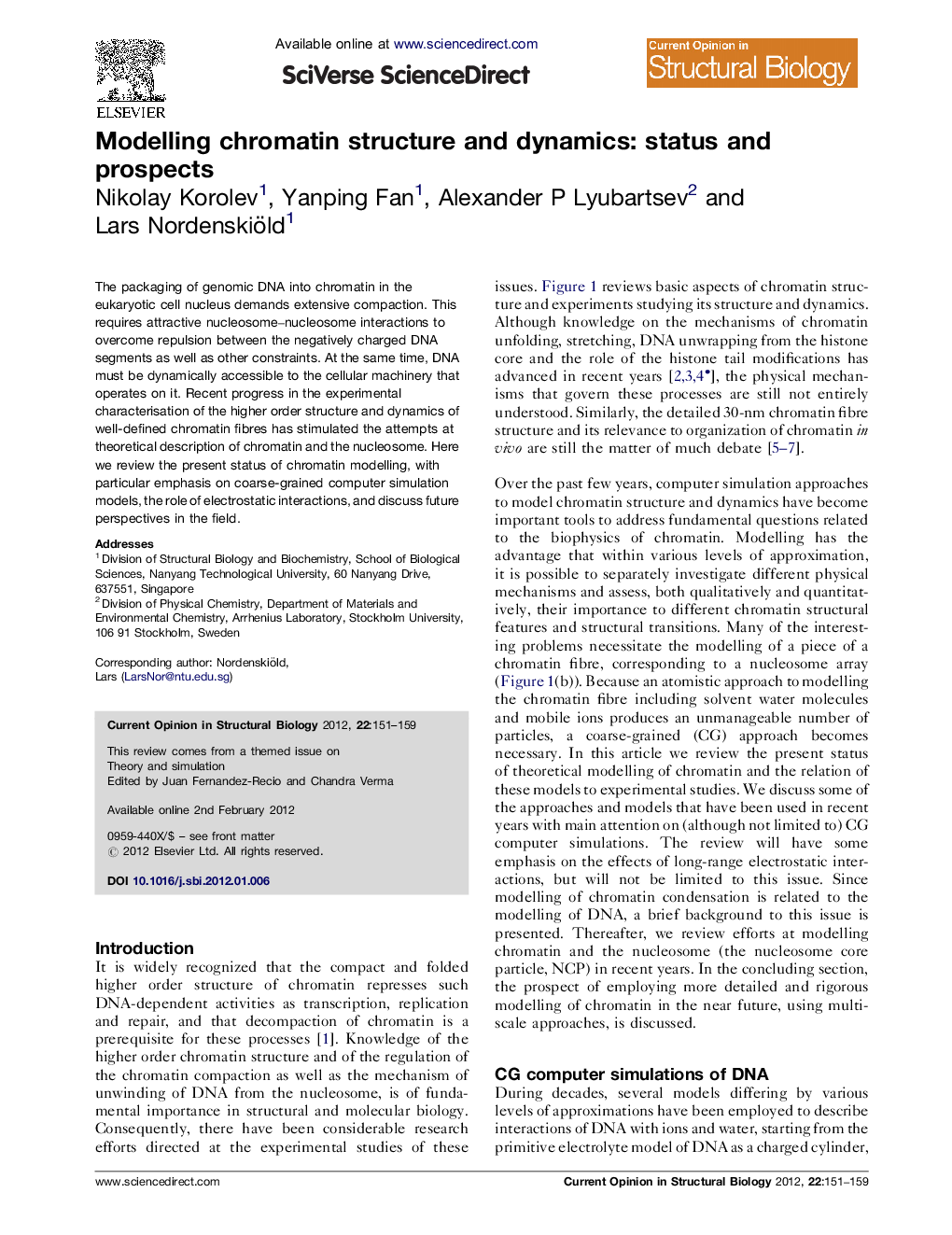| Article ID | Journal | Published Year | Pages | File Type |
|---|---|---|---|---|
| 1979192 | Current Opinion in Structural Biology | 2012 | 9 Pages |
The packaging of genomic DNA into chromatin in the eukaryotic cell nucleus demands extensive compaction. This requires attractive nucleosome–nucleosome interactions to overcome repulsion between the negatively charged DNA segments as well as other constraints. At the same time, DNA must be dynamically accessible to the cellular machinery that operates on it. Recent progress in the experimental characterisation of the higher order structure and dynamics of well-defined chromatin fibres has stimulated the attempts at theoretical description of chromatin and the nucleosome. Here we review the present status of chromatin modelling, with particular emphasis on coarse-grained computer simulation models, the role of electrostatic interactions, and discuss future perspectives in the field.
► We review recent approaches to modelling structure and dynamics of chromatin. ► We present various coarse-grained computational approaches to modelling chromatin. ► We present the results of modelling chromatin fibre folding and stretching. ► We compare approximations to description of relevant forces in chromatin models. ► We discuss the prospects of multiscale coarse-grained chromatin modelling.
